3D Binder Jetting
From initial concept to final delivery, our comprehensive services cover every step of the product development process.

Binder Jetting
Binder Jetting builds parts layer-by-layer by depositing a liquid binding agent onto a bed of powder material include metal, sand, or ceramic. By eliminating the constraints of traditional manufacturing and the need for thermal-based supports, we can produce intricate and large-scale parts with exceptional speed. As your dedicated manufacturing partner, we integrate binder jetting into our comprehensive suite of services to provide a seamless path from concept to finished product.
Binder Jetting process
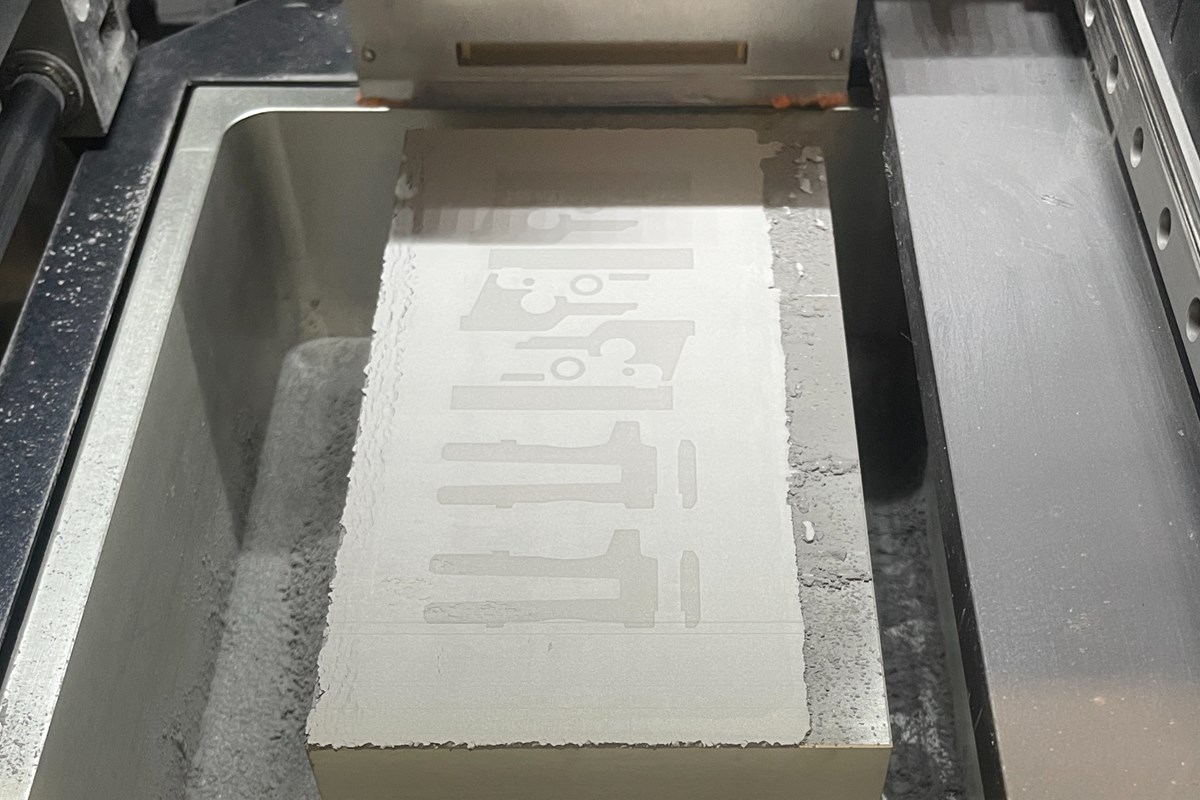
Powder Bed Creation
A thin layer of powder material (sand, ceramic, or metal, depending on the desired application.) is spread across a build platform.
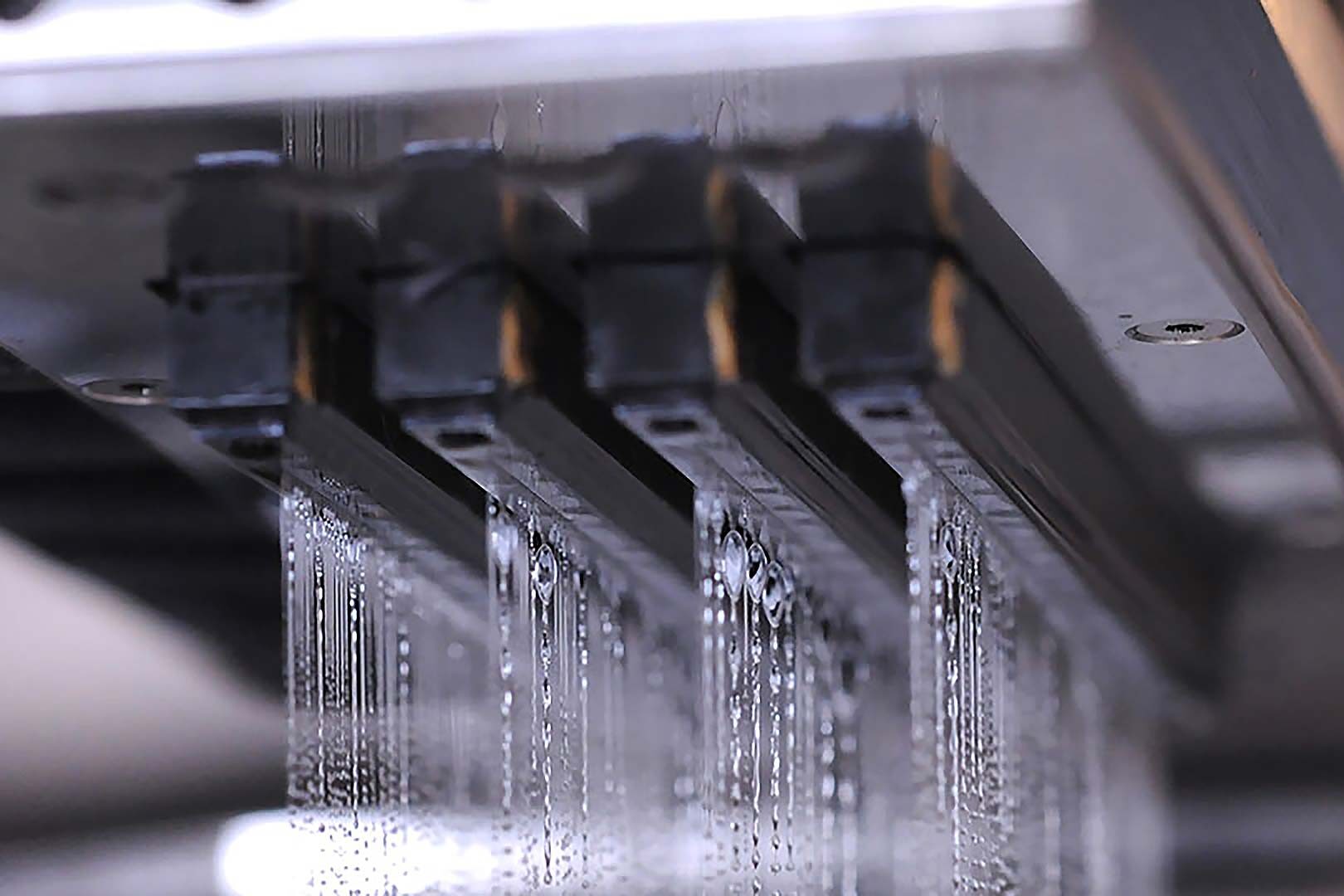
Binder Deposition
An inkjet print head selectively deposits the liquid binder onto the powder layer, bonding the particles in the desired shape
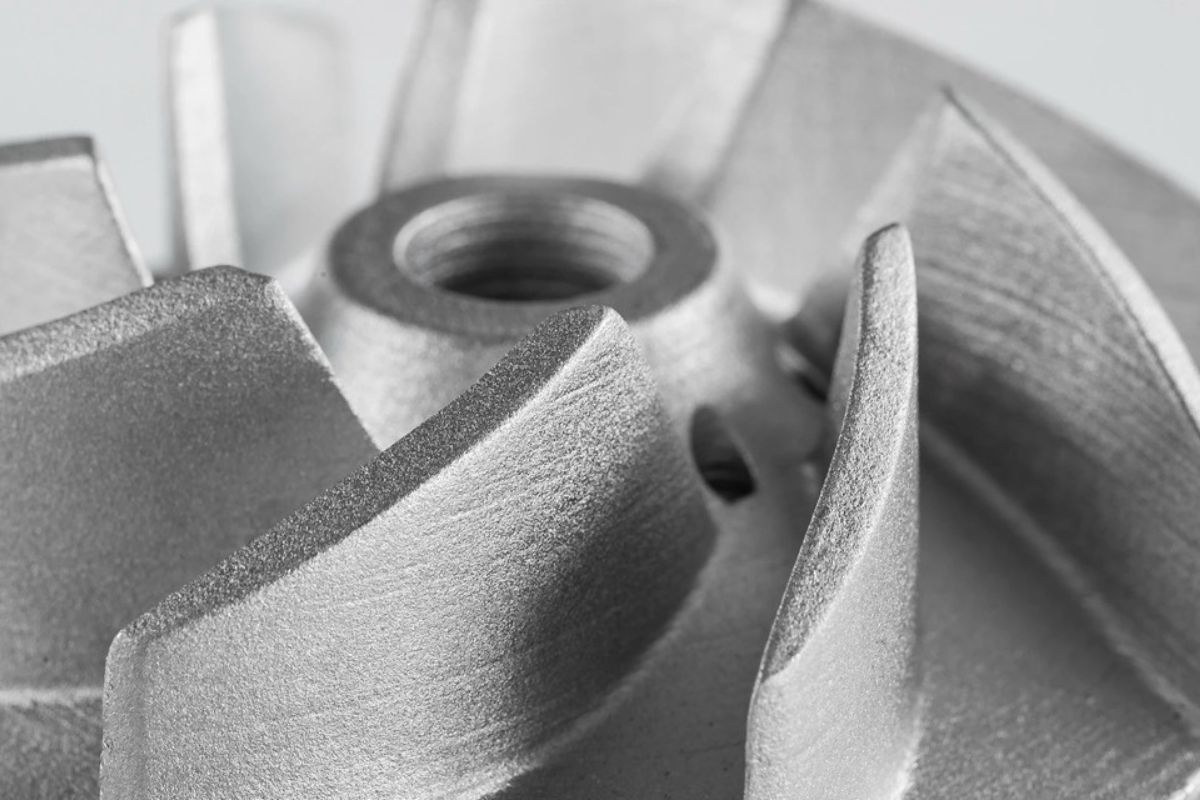
Layer Repetition
The build platform lowers, and a new layer of powder is spread, followed by binder deposition, repeating the process until the part is complete

Post-Processing
Post-processing steps like sintering (for metals and ceramics) or infiltration may be required to get desired properties of the final part.
Key Advantages of Binder Jetting
Unmatched Production Speed
The ability to nest multiple parts within the entire build volume makes binder jetting one of the fastest AM methods for both one-off prototypes and series production, drastically reducing your lead times.
Unparalleled Design Freedom
Create complex internal channels, intricate lattice structures, and organic geometries without the need for support structures. This self-supporting process empowers engineers to design for function, not for manufacturability.
Lower Tooling Costs
At Star Future, we prioritize quality in every aspect of our manufacturing process. Each component undergoes rigorous quality checks to ensure it meets the highest standards of performance and reliability.
Custom Solutions
We understand that every application is unique. Our engineering team works closely with you to design and manufacture custom components tailored to your specific needs and performance requirements.
Materials We Work With
Silicon carbide (SiC) is a high-performance ceramic known for its exceptional hardness, thermal conductivity, and resistance to wear and corrosion.
Specifications :
- Particle Size: Typically 5–45 μm.
- Density: ~3.2 g/cm³.
- Hardness: Mohs hardness ~9.2.
- Melting Point: ~2730°C.
- Thermal Conductivity: High.
- Electrical Conductivity: Semi-conductive.
Applications in Sand Casting/Binder Jet 3D Printing :
- Used in binder jet 3D printing for creating molds due to its high temperature resistance.
- Ideal for casting components that require high-temperature performance, such as aerospace and automotive parts.
Zirconia (ZrO₂) is a versatile ceramic with excellent mechanical properties, including toughness and chemical stability.
Specifications :
- Particle Size: Typically 1–10 μm.
- Density: ~6.1 g/cm³.
- Hardness: Mohs hardness ~8.2.
- Melting Point: ~2715°C.
- Excellent thermal stability and chemical resistance.
Applications in Sand Casting/Binder Jet 3D Printing :
- Used in binder jet 3D printing for making molds due to its ability to withstand high temperatures during casting.
- Commonly used in dental prosthetics and orthopedic implants, but also suitable for industrial molds.
Alumina (Al₂O₃) is a widely used ceramic known for its high hardness, thermal stability, and chemical inertness.
Specifications :
- Particle Size: Typically 1–10 μm.
- Density: ~3.98 g/cm³.
- Hardness: Mohs hardness ~9.
- Melting Point: ~2072°C.
- Excellent thermal and electrical insulation properties.
Applications in Sand Casting/Binder Jet 3D Printing :
- Used in binder jet 3D printing for creating molds, especially for high-temperature applications.
- Suitable for casting components that require wear resistance and high-temperature stability.
Silicon dioxide (SiO₂), also known as silica, is a common ceramic material with excellent optical and thermal properties.
Specifications :
- Particle Size: Typically 1–10 μm.
- Density: ~2.2 g/cm³.
- Hardness: Mohs hardness ~7.
- Melting Point: ~1713°C.
- Excellent optical transparency and chemical inertness.
Applications in Sand Casting/Binder Jet 3D Printing :
- Used in binder jet 3D printing for creating molds, particularly for components requiring precision and transparency.
- Useful in applications where low thermal expansion and chemical resistance are critical.
Tungsten is a dense metal with extremely high melting and boiling points, making it ideal for high-temperature applications.
Specifications :
- Particle Size: Typically 1–10 μm.
- Density: ~19.3 g/cm³.
- Hardness: High.
- Melting Point: ~3422°C.
- Excellent thermal and electrical conductivity.
Applications in Sand Casting/Binder Jet 3D Printing :
- While not typically used in sand casting or binder jet 3D printing for molds, tungsten can be used in binder jet 3D printing for direct part production, especially for heavy-duty components.
- Often used in X-ray targets and radiation shielding.
Bronze is an alloy of copper and tin, known for its ductility, corrosion resistance, and low friction properties.
Specifications :
- Composition: Copper (~90%) and Tin (~10%).
- Particle Size: Typically 10–50 μm.
- Density: ~8.8 g/cm³.
- Hardness: Moderate.
- Melting Point: ~950°C.
- Good corrosion resistance and ductility.
Applications in Sand Casting/Binder Jet 3D Printing :
- Used in binder jet 3D printing for creating molds, especially for casting bronze or other metals.
- Ideal for decorative and artistic applications, as well as components requiring good wear resistance and low friction.
Stainless steel is an alloy of iron, chromium, and other elements, providing excellent corrosion resistance and strength.
Specifications :
- Common Grades: 316L, 310S, etc.
- Particle Size: Typically 15–45 μm.
- Density: ~7.9 g/cm³.
- Hardness: Moderate to high.
- Melting Point: ~1400°C.
- Excellent corrosion resistance and biocompatibility.
Applications in Sand Casting/Binder Jet 3D Printing :
- Used in binder jet 3D printing for creating molds, especially for casting stainless steel parts.
- Ideal for medical implants, marine equipment, and food processing machinery.
Superalloys are high-performance alloys designed for extreme environments, combining high strength, heat resistance, and corrosion resistance.
Specifications :
- Common Types: Inconel, Nimonic, etc.
- Particle Size: Typically 15–45 μm.
- Density: ~8.0–8.5 g/cm³.
- Hardness: High.
- Melting Point: ~1300°C to 1400°C.
- Excellent high-temperature strength and oxidation resistance.
Applications in Sand Casting/Binder Jet 3D Printing :
- Used in binder jet 3D printing for creating molds, especially for casting superalloy parts.
- Ideal for aerospace components, jet engine blades, and power generation systems.
Surface Finishing Options
At Star Future, we recognize that the right surface finish is key to enhancing your product’s performance, longevity, and marketability. Our extensive finishing services not only elevate the appearance of your parts but also provide functional improvements that enhance durability and resistance. Whether you need a smooth, polished finish or a tough, corrosion-resistant coating, we offer a wide range of finishing solutions customized to meet your exact requirements.
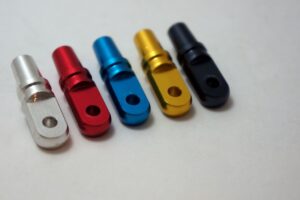
Anodizing enhances the durability and corrosion resistance of aluminum parts by creating a tough, oxide layer. This process also allows for the addition of color, providing both functional protection and aesthetic appeal. Anodized surfaces are ideal for applications in aerospace, automotive, and consumer products.
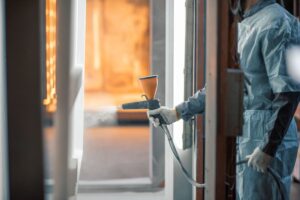
Painting provides a protective and decorative coating to metal and plastic parts, offering excellent color options and surface protection. This process improves resistance to environmental factors such as UV exposure and corrosion, making it ideal for automotive, industrial, and consumer applications.
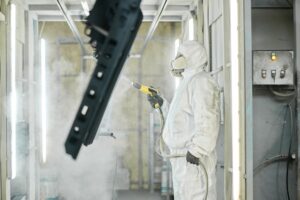
Powder coating applies a durable, protective layer of color to metal parts, offering superior resistance to corrosion, wear, and fading. This eco-friendly process ensures a smooth, even finish, making it ideal for parts that require a strong, long-lasting surface, often used in industrial and consumer goods.
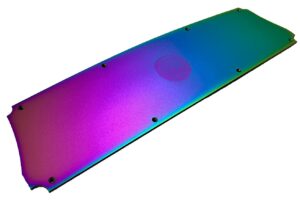
Physical Vapor Deposition (PVD) is a high-performance coating that deposits thin films of metal onto parts for enhanced durability, wear resistance, and corrosion protection. This advanced technique is often used in applications requiring a hard, decorative finish, such as aerospace, medical devices, and electronics.
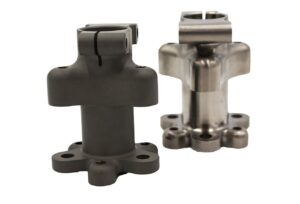
Passivation is a chemical treatment for stainless steel that enhances its corrosion resistance by removing surface contaminants. This process improves the longevity and performance of metal parts, making it essential for industries like aerospace, medical, and food processing where cleanliness and durability are crucial.
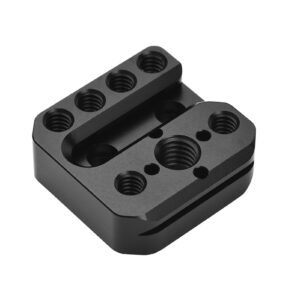
Black oxide is a conversion coating applied to ferrous metals, providing mild corrosion resistance and reducing friction. This process gives parts a sleek, black finish and is commonly used in tools, fasteners, and precision components, offering both aesthetic enhancement and functional protection.
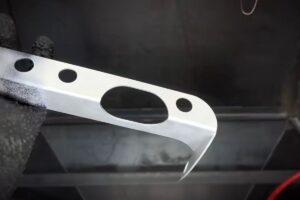
Bead blasting uses fine media to create a uniform, matte surface finish by removing surface imperfections. This technique enhances the texture and appearance of metal parts, offering a refined, consistent look, often used for cosmetic finishes or surface preparation before other treatments like painting or anodizing.
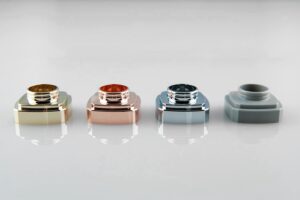
Electroplating applies a thin layer of metal, such as nickel, chrome, or gold, onto a part’s surface to improve corrosion resistance, wear protection, and appearance. This process is widely used for both decorative and functional purposes in industries like electronics, automotive, and jewelry.
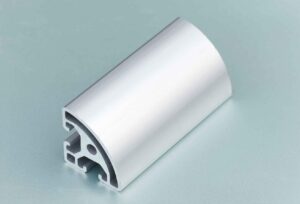
Electrophoresis is an electrochemical process that applies an even, corrosion-resistant coating to metal parts. It offers excellent adhesion and uniform coverage, making it ideal for automotive components, hardware, and other parts requiring durable, long-lasting protection against rust and wear.
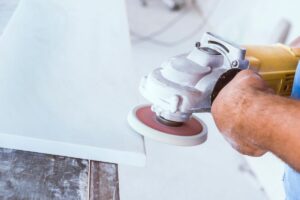
Polishing is a finishing process that smooths and shines metal surfaces, enhancing appearance and reducing friction. It creates a mirror-like finish by removing scratches and imperfections, often used in High-precision components, decorative parts, and products where aesthetic quality is critical.
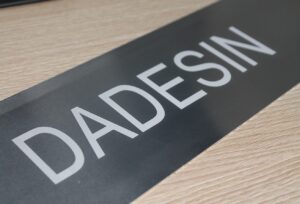
Laser engraving uses a focused laser beam to etch precise, permanent markings onto the surface of parts. This process is ideal for creating detailed logos, serial numbers, and barcodes on metals and plastics, offering durability and clarity for branding or traceability purposes.
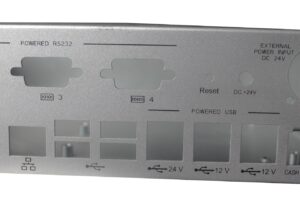
Silkscreen printing is a versatile technique used to apply ink to flat or curved surfaces, creating sharp, durable graphics and text. This process is widely used for branding, labeling, and decorative purposes on parts and components, commonly seen in electronics, consumer goods, and industrial equipment.
Why Us
At Star Future, we don’t just manufacture parts—we accelerate innovation. Our capabilities in CNC machining, 3D printing, sand casting and more allow us to use the best process for every single part of your project. Here’s why industry leaders trust us as their end-to-end prototyping and precision manufacturing partner.
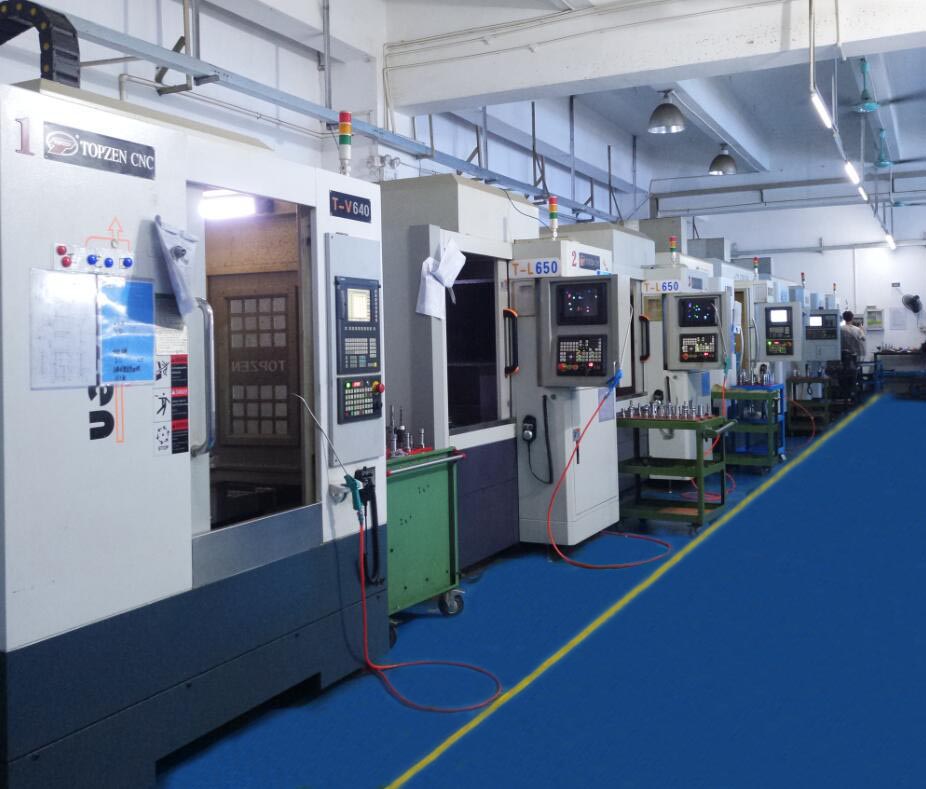

End-to-end Capabilities
Simplify your supply chain. We combine sand casting, multi-axis CNC machining, industrial 3D printing under one roof. No juggling vendors. No compatibility gaps.
Fast Turnaround
Get functional prototypes and pre-production samples fast. Our integrated processes slash lead times while maintaining rigorous quality standards.
Flexible On-demand Production
Whether you need 1 prototype or 500 bridge-production units, our flexible capacity grows with your project—without sacrificing speed or precision.
Cost-effective
By eliminating the need for physical patterns and tooling, we significantly reduce upfront costs, making it economically viable to produce single prototypes or small batches of parts.
Ready for Manufacturing? Get a Free Quote & Expert Advice.
Have a CAD file or project specs? Our manufacturing engineers are ready to review your requirements and provide a fast, competitive quote for CNC machining, sand casting, 3D printing, or gear manufacturing.
Frequently Asked Questions.
We support all major CAD formats:
STEP, IGES, STL, SLDPRT, X_T, PARASOLID (and more).
Our engineers will review your design for manufacturability (DFM) and provide optimization suggestions before production begins.
We offer a wide range of materials for various manufacturing processes, including:
- Metals (Aluminum, Steel, Titanium, etc.)
- Plastics (ABS, Nylon, Polycarbonate, etc.)
- Composites and specialized materials depending on the application. We also provide material consultation to help you select the most suitable materials for your project.
Absolutely. Our 5-axis CNC machining centers (±0.01mm) and industrial 3D printers excel at:
Intricate designs, thin walls, and internal features
Tolerances down to ±0.025mm for critical dimensions
Challenging materials (e.g., Inconel, PEEK, tool steels)
Absolutely! We offer a wide range of surface finishes and post-processing options to enhance both the appearance and functionality of your parts. Whether you need polishing, anodizing, painting, or another specific finish, we can accommodate your requirements.
Lead times vary depending on the service and project complexity. Rapid prototyping can typically be completed within a few days, while more complex manufacturing projects such as Low-volume production or tooling may take longer. Once we receive your project specifications, we’ll provide a detailed timeline.
